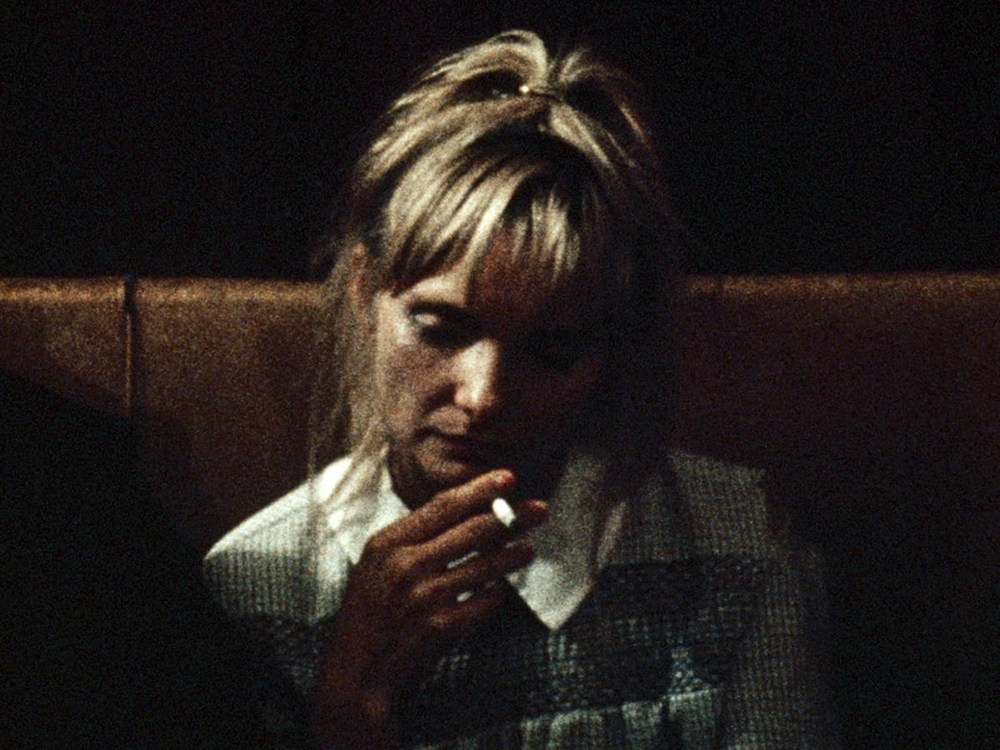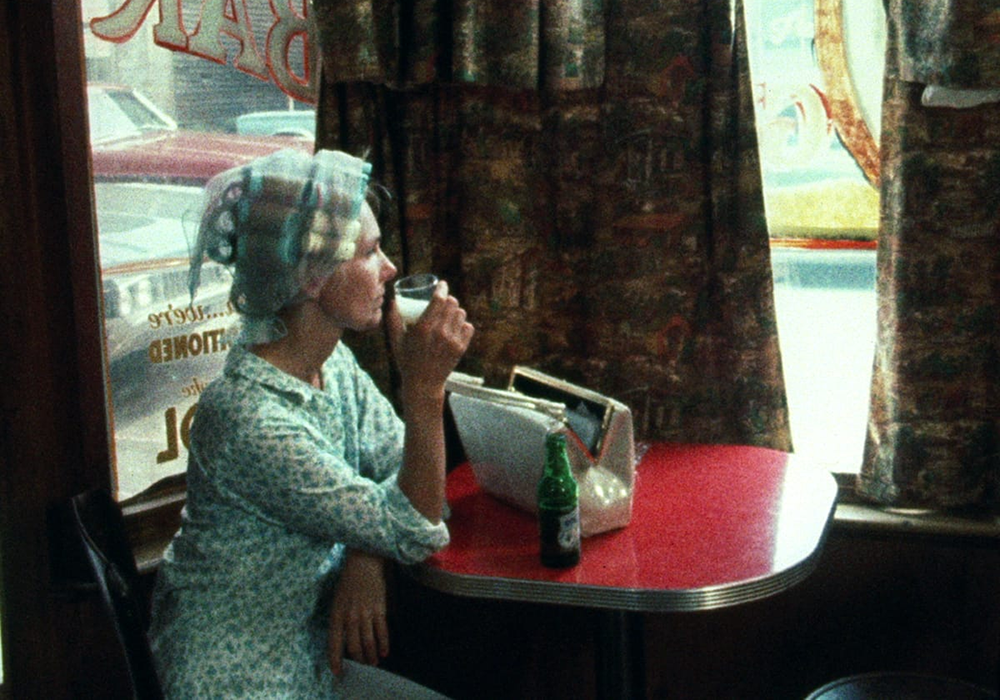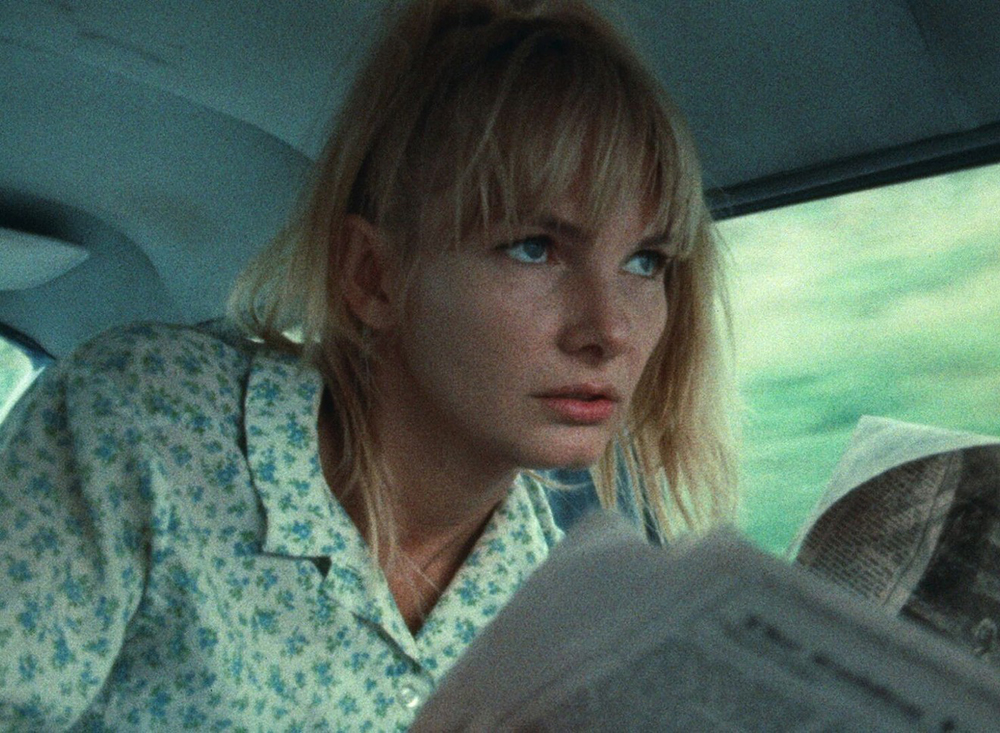For such a polished, emphatic artistic statement, Barbara Loden’s “Wanda” still emits a grim aura of unfinished business. Beginning and ending her directing career with this gritty masterpiece, Loden poured decades of industry experience and personal anguish into the title character, crafting an unwieldy mixture of cinematic genres (courtroom drama, road movie, high-stakes heist), into an unflinching wallop that escapes simplistic comparisons. And so it’s past due that “Wanda” enters the canon, debuting on “Sight & Sound’s” ‘Greatest Films’ poll at no. 48, earning its spot on merit with a strong nudge from a grassroots, multi-decade campaign to revive and restore this landmark effort. Since this is the only Loden feature we have, it has to be enough, an unclassifiable stunner with no obvious predecessor or worthy future imitator.
‘Wanda’s’ Slow Reemergence
Long neglected since winning “Best Foreign Film” at the Venice Festival in 1970, “Wanda’s” reemergence began at the turn of this century. Isabelle Huppert financed and championed a re-release of the film in 2003, seven years before The Film Foundation’s restoration premiered (with Sofia Coppola introducing) at the Museum of Modern Art. In Sight & Sound’s 2012 poll, “Wanda” notched 8 votes, putting it at a tie for 202nd in the critics’ poll. The Criterion Collection added “Wanda” in 2018, and the accompanying theatrical run — at New York’s Metrograph theater — enlightened and delighted cinephiles of a new generation. It’s now available on at least two streaming services, including Criterion Channel, continuing its upward ascent out of obscurity.
Loden’s bruising vision of survival might no longer be an elusive commodity to film lovers, but nor have the themes it explores — independence, motherhood, poverty, crime — gone obsolete. It’s an intensely political film without a heavy hand, and each frame is so packed with humor and hazards, it’s an embarrassment of riches to recount and rehash all of Wanda’s bad decisions. Leave reflecting until the end, though, when Wanda has practically traveled in a circle, back to a dive bar surrounded by strangers, cigarettes and hamburgers. Having grown up in rural North Carolina, Loden had commented on the autobiographical elements of her film, believing that Wanda is who she would have become had she not made it in show business.
Oh, but Loden did make it, beginning as a regular on “The Ernie Kovacs Show,” both as a sidekick to the host and member of The Nairobi Trio, for which she donned a derby hat and gorilla costume. She made her feature film debut in Elia Kazan’s “Wild River” (1960) and then stole scenes as Warren Beatty’s flirty, tempestuous sibling in Kazan’s “Splendor in the Grass” (1961), which was around the time Loden learned the fate of Alma Malone, and reportedly began to hatch a plan to bring that story on-screen. Loden married Kazan in 1967, and in that decade, her most notable accolade (there were no other feature films) was winning a Tony for the Kazan-directed “After the Fall,” Arthur Miller’s play in which Loden took on the role originally written for and performed by Miller’s then-wife, Marilyn Monroe.
Loden — Director, Writer, and Star

Destined to play her own muse, Loden was one of the first women to write, direct, and star in feature film, a fact which might have intimidated or perplexed observers. In an interview on the Dick Cavett Show, Loden suffered through banal questions about the plot (“A woman robs a bank?”) and condescending assumptions about how Kazan must have been “looking over her shoulder.” Loden was quick to correct Cavett for his summary of the story and how it mirrored her own experience, bringing attention to the 1959 crime spree and arrest of Malone and her partner, Mister Ansley. Loden’s “Wanda” reconsiders and expands on the true story — i.e. two amateur criminals kidnap Mr. Fox, a bank manager, yet botch the associated robbery when Malone takes a wrong turn. Ansley is shot dead, Malone ends up in prison for ten years and is freed on parole April 8, 1970.
With that source material, it makes sense that Cavett would default to the heist narrative, lovers on the lam rallying against a crooked capitalist system. Incompetence dooms them, and it’s somehow sad to see these born losers fail. Take that thread, throw a dart, and a director might pitch studios on the next “Bonnie and Clyde” (1967) or “In Cold Blood” (1967). Too mainstream? Perhaps evoke “Easy Rider” (1969) or package the hipster felons in arthouse drapings, anticipating Terrence Malick’s “Badlands” (1973), another ripped-from-the-headlines cinematic ballad. Loden rejected conventional approaches, arguing that certain jump-cut-happy, horny on New Wave-cool films were too “too perfect to be believable.” Resisting ‘slick pictures’ (Bonnie could have been the poster child) Loden made “Wanda” with full creative control, stripping down the visual story yet compounding the impact with an intense, unwavering gaze at these lives on the margins.
The result is breathtaking, a stylistic bravura more evocative of the cinéma vérité tacticians D.A. Pennebaker or the Maysles brothers than a rule-breaking New Hollywood indie. Comparing Loden to a documentarian is no stretch given the palpable gust of nonfiction: the Malone backstory merged with Loden’s own life congeals into a feisty, funny and entirely believable few days in the life of our girl in Carbondale. The opening scenes announce the milieu. Wanda is not the first person we see, rather, it’s a couple and their child, sitting in a crowded kitchen whose bad-coffee and dirty-dishes smell practically seeps through the screen. The camera cuts away to the couch, and the presumed itinerant who emerges from under the covers. It’s Wanda, the roommate you don’t want but can’t say no to, who lives rent free and comes and goes without warning.
Separating itself from Films of the Era
From there, Wanda saunters outside among the vast coal-scape, taking money from a friend, then hopping on a bus to the courthouse. Here, the composition takes shape: it’s a custody hearing, to which Wanda is tardy. And while her husband girds for a fight, Wanda submits, agreeing that her children would be better off with him. Loden dispatches Wanda’s family with such efficiency that it’s clear whose journey this will be, and it won’t be in the service of children or with any permission sought from an ex. She might not care to articulate what she wants, but the purpose of the scene is to maximize character building while minimizing time spent in the courtroom. Suspense ratchets up elsewhere, this is just the first in a long trail of Wanda’s story that she will need to leave behind.

Creating this distance so early on between Wanda and her former self — mother, caretaker, kept woman — is what separates “Wanda” from so many — to borrow from Molly Haskell – “woman-adrift” films of that era. In those, the struggle begins (and often ends) at home, and the odyssey that these women take range from circular (“Diary of a Mad Housewife,” 1970), to harrowing (“A Woman Under the Influence,” 1974) to fatal (“The Rain People,” 1969). The escape is what drives the tension in “Diary” and “Rain,” whereas in “Wanda,” it’s the aimlessness of her wandering. One thing leads to another, and what might play for laughs in a lesser movie is deployed to raise the stakes here. After the custody victory, Wanda goes to a bar and to bed with a stranger who ditches her at a highway ice cream stand. That abandoning is what leads her to Mr. Dennis (Michael Higgins).
Wanda refers to this man as Mr. Dennis with a submissive tone that could also double as a winking mockery. The guy is an incapable thief and a pushy partner, who demands that she never wear pants, it has to be a dress or a skirt. He’s also a picky eater (“No garbage on the burger!”) and a murderer. Their relationship is not built on love or sexual attraction, it’s more that Wanda has nothing better to do, and he offered her a ride and a free meal of spaghetti and beer. She follows his orders and doesn’t second-guess his criminal whims, and does a grace of permitting him to pick out a hat for her to wear. Presumably, they have sex, but Loden never shows that. It’s no romantic union, and the robbery angle isn’t presented as a saving grace for Wanda: she’s really just along for the ride.
Capturing Despair in Magical Freeze Frame
But this is no laconic hangout film, it’s a pulsating, provocative study of aspiring villains without a heroic bone between them. True, that Mr. Dennis is a one-note asshole, although Loden allows him moments of redemption, reconciling with his father in an extraordinary scene filmed at the ‘Holy Land USA Theme Park,’ a kitschy real-life tourist trap that must have made Fellini or Demme drool with envy. And, as for the title character, Haskell again said it best: no “positive role model” here! Wanda borrows money she can’t repay, ditches her family without remorse, and plays along with Mr. Dennis’s twisted kidnapping/robbery/accidental murder scheme. Still, her denouement departs from Alma Malone’s; she avoids jail, but some prisons don’t have bars. The last scene places Wanda at a dinky saloon, smoking a cigarette and staring straight at the camera, capturing her despair in a magical freeze frame.

Loden didn’t live to see “Wanda’s” reappraisal. Diagnosed with breast cancer in 1978, she died two years later, a tragic end for a trailblazing artist who defied the roles written for her by creating a personal avatar and ensuring that it was her vision that bled from the final product. Labeling a film “autobiographical” or “personal” might give a creator cover for arranging a story in a certain way, taking short cuts that excuse incomplete or dull storytelling. Loden’s coup is that she successfully merged her own story with Alma Malone’s, and peppered the narrative with indelible details and impeccable visual artistry. It’s an experimental film that looks like a road documentary, a comedy-of-manners with shocking jolts of violence. It offers something for all tastes, and so it’s no major shock that “Wanda” stormed the latest ‘Greatest Films’ list, a favorite for the most discerning audience.
#48 on Sight & Sound’s ‘Greatest Films’ New Poll
Midway through the film, the tyrannical Mr. Dennis commits a customarily petty gesture, throwing Wanda’s old clothes out the window. The camera fixes on Wanda’s face, looking outside the car with a frozen glare of disbelief. Driving forward, she’s trying to leave it all — kids, family, wardrobe — behind, though her melancholic stare suggests a nagging cloud of gloom looms, and everything won’t turn out all right. Then again, if she’s questioning what she’s doing there with him, it doesn’t show in her actions, and all she can do at this point is stay the course. Loden’s admiration and frustration for these outcasts elevates them from victims to perpetrators, and that endears them to an audience eager to root for underdogs. It took some time for the world to treasure this anti-Cinderella story, and with the official blessing of the international film community, Loden’s — and “Wanda’s” — vaunted status is justifiably secure.
The next essay in this series will be Howard Hawks’ “Rio Bravo” (1950).


